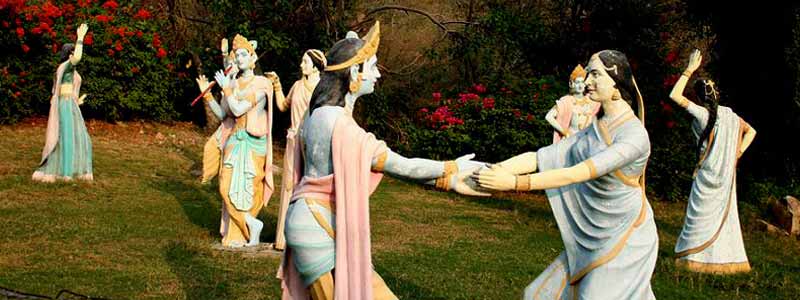Kanak Vrindavan Garden is a garden in Jaipur, the capital of Rajasthan. It is built in a valley surrounded with the aid of Aravali hills and is positioned on the manner to the Amer Fort at the lowest of the Nahargarh hill. The place is approx 8 km north of the Jaipur metropolis. The garden complex is having many nearby vacationer points of interest as the Amer fortress Palace, Jaigarh castle and Nahargarh citadel at the side of masses of lush greenery. The lawn changed into coined by way of Kachchwaha Rajput Maharaja Sawai Jai Singh of Jaipur, about 275 years in the past, at the time while the complex become constructed.
It includes term ‘Vrindavan‘ because the garden resembles the descriptions of the vicinity, wherein God Sri Krishna had performed MahaRaas close to Mathura, and word Kanak got here from Maharaja’s one of the Maharani Kanakde. This lawn is as compared to the valley of Vrindavan and the maharaja, consecrated an idol of Sri Krishna in a temple inside the Kanak Vrindavan valley known as the Shri Govind Deoji Parisar. The lawn has a temple, a series of fountains and tricky marble decorations. It is controlled via the Government of Rajasthan.

History of Kanak Vrindavan Garden
The garden was built around 280 years ago by Maharaja Sawai Jai Singh. The garden is assumed to look similar to the mythological garden where Lord Krishna played during his childhood. This garden and the structure were built for king’s recreational uses. There is also a sacred spot inside the garden where several rivers meet. The water in this region is considered to be holy and a temple was built near it to praise Lord Vishnu Jaipur Tour Packages.
This garden is located on the foothills of Nahargarh Hills. The place is lined with lush trees that form an umbrella over the lawns of the garden. The garden walls are decorated with mirror work and jail work of Mughal styles. The garden is geometrically divided into eight sections. There is a small fountain located in the garden, which is famous for being carved out of a single giant slab of marble. It is called as Parikrama. You can find intrinsic designs on the fountain and on the walls of the temple, inside the Kanak Vrindavan Garden.
The room where the main deity of the temple is located is decorated with panni work. From the garden, you can spot Jal Mahal, Amber Fort, Jaigarh Fort and Nahargarh Fort.

Architectural Layout of the Garden
The boundaries of the garden are lined with lush green trees that form an umbrella over the lawns of the Garden. The walls of the garden are decorated with mirrors and jail work making the walls look gleaming and beautiful. There is a small fountain located in the middle of the Garden, famous for being carved out of a single giant slab of marble. People usually take rounds around it, which is also a religious activity called Parikrama. Jaipur Attractions The room where the main deity of the temple is located is decorated with panni work. From the garden, you can spot Jal Mahal, Amber Fort, Jaigarh Fort, and Nahargarh Fort.
Best Time to Visit
Winter is the right time for relaxing, strolling and other leisure activities thus, it is suitable to visit from November to March.
Early Summer is the time when one can see new flowers blooming, thus people usually visit from March till the end of June.
How To Reach Kanak Vrindavan Garden
Kanak Vrindavan Garden is located in the Capital of Rajasthan state of India, Jaipur. It is distanced 10 KM away from the starting of the city. One can easily reach there by Air, Railway and Road.
By Air: Kanak Vrindavan Garden is located 40 KM away from Jaipur International Airport (JAI). From here, one can take up a cab to reach the Palace in 43 minutes.
By Railway: The Garden is located 10 KM away from Jaipur Junction Railway Station. Thus, one can take a cab to reach the destination in 35 to 40 minutes.
By Bus: Nearest Bus Stop to Kanak Vrindavan Garden is Bus Stop in Chandpole, Purani Basti which is distanced 5.7 KM away from the place. One can take up a cab to reach the destination within 15 to 20 minutes.
